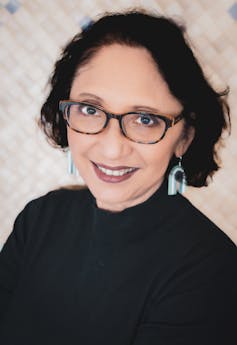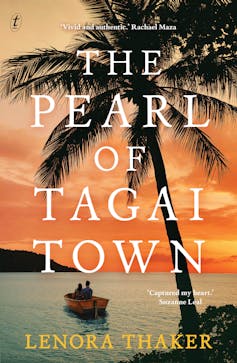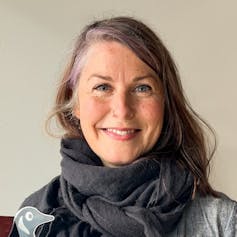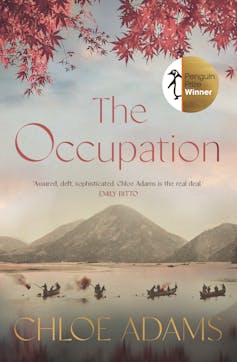
A couple of years ago, I designed a creative writing course for a family history diploma at university. My cohort of amateur sleuths was passionate and proud, but with mostly British and European heritage. So I decided to encourage a more inclusive approach to the topic.
I wanted my students to reconsider their predominantly colonial perspectives, and to produce more varied and representative accounts of the past. I developed a reading list of novels and memoirs by Aboriginal writers and migrants from culturally and linguistically diverse communities, some of whose ancestors had arrived in Australia as asylum seekers.
I invited students to reappraise their settler histories in the light of contemporary, more enlightened social attitudes employing empathy and sensitivity. And I explained the problem of cultural appropriation, the need for conscious care with narrative voice, and how to contextualise outdated, potentially offensive terminology. I’m glad to say my students loved their new course.
Review: Pearl of Tagai Town – Leonora Thaker (Text), The Occupation – Chloe Adams (Penguin)
If I were teaching now, I’d be recommending Lenora Thaker’s The Pearl of Tagai Town and Chloe Adams’ The Occupation to my class.
Both novels are valuable examples of historical fiction woven from elements of family history that succeed in shedding light on marginalised chapters of Australia’s recent past. Each considers the impact of the second world war on two young women from vastly different backgrounds, charting some of the slow but significant changes in Australian society during the 20th century.
A shimmering debut
Lenora Thaker is a Meriam and Wagedagam woman descended from the Torres Strait Islanders of far north Queensland. Her novel is set in Tagai Town, a fictional shanty settlement based on Cairns’ Malay Town where her late father grew up. The story opens in 1935, with a slightly clunky church scene designed to introduce the Tagai community. But it quickly establishes itself with a warm and captivating style, a rich cast of vividly drawn characters and a memorable protagonist.

Pearl Able is the strong-minded teenage daughter of a Western Torres Strait mother and an Eastern Torres Strait father who yearns for independence. Caught between her family’s traditional values and the jealousies and rivalries of her peers, she tests the boundaries at home and wonders where to place herself within the confines of Tagai’s close-knit, hardworking society.
An unprecedented opportunity arises in the white settlement of nearby Figwood, when Pearl rescues the elderly Mrs Tattle from an accident in her store. The grateful shopkeeper offers Pearl a job and, after convincing her parents to agree, Pearl sets about reorganising Mrs Tattle’s stock room.
Forced to deal with the prejudice of Tattle’s customers, Pearl nevertheless proves herself to be a valuable asset to the business and eventually becomes the first woman of colour to work behind the counter in a Figwood shop. At the same time, her personal life follows a similarly transgressive route when she embarks on a secret relationship with Teddy, the son of the local bank manager, despite her mother’s warnings about “kole” (white) men.
For a while, Pearl’s defiant ambition pays off. She takes on more responsibility at work and her relationship with Teddy deepens. But racial inequities persist and circumstances conspire against her, resulting in a case of brutal injustice.
After a spell of incarceration on a mission, Pearl finds her way back to her family and is briefly reunited with Teddy. But the outbreak of war brings unforeseen change. Teddy departs with the army, an influx of Black American troops arrives and a beloved local Japanese man is detained with his Islander family.

As the story reaches its emotional conclusion, Pearl’s spiritual beliefs are called into question by her grandmother and a climactic trip to Brisbane sees Pearl reunited with her best friend, Curly Anne, now a glamorous singer with a dazzling career. But there are other, more painful reasons for Pearl’s journey. The outcome of her visit to the city will decide the next stage of her life.
First and foremost an Islander woman’s story, this powerful novel communicates some unbearably harsh truths within the context of a gripping and compelling narrative.
It emphasises the human tragedy of colonial rule, while showing how resilience and hope can survive an oppressive authoritarian system. It critiques the limitations of strict family custom and the psychological impact of magical thinking from the imperative of lived cultural experience, offering valuable insights into Islander history.
Inspirational yet sobering, this is a moving portrayal of faith, courage and tenacity. It captures the intricate nature of Australia’s shifting social landscape, including the diverse attitudes of the white population. A shimmering debut, it would translate beautifully to the screen.
A woman in occupied Japan
Chloe Adams’ The Occupation, which won the 2024 Penguin Literary Prize for an unpublished literary fiction manuscript, is a slow-burning tale about a young white woman stationed in occupied Japan after the second world war. With this month’s 80th anniversary of the horrific nuclear attack on Hiroshima, the story holds particular significance.

It’s inspired by the experiences of Adams’ maternal grandmother, who worked in Japan during the Allied occupation, and the writings of Australian intelligence officer, Allan S. Clifton. Adams, like Thaker, has produced a highly accomplished debut that chronicles a lesser-told part of 20th century Australian history from a female perspective. Her protagonist, though, is comparatively privileged.
The story begins in 1949, with a brief and painful encounter between the pregnant but unmarried Mary Egan, recently returned from Japan, and her cousin Tess, to whom Mary reluctantly promises her unborn child. Following this intriguing prologue, the novel shifts back to 1948 and Mary’s first day in Japan’s ruined port city of Kure, at the operational headquarters for the British Commonwealth Occupation Force.
At home in Australia, Mary had been the appointed carer of her younger half-siblings, after her hopes of marriage were dashed by the death of her fiancé, Thomas. Now, newly trained as a dental nurse, she arrives at the barracks eager to apply her skills. Instead, she is assigned to a lowlier position at the Dew Drop canteen, serving meals in the mess.
Disappointed by this apparent demotion, Mary nevertheless embraces her new social life. She heads off on picnics and attends dances with her roommates and their boyfriends. But as she observes the daily rhythms of the camp and visits the wreckage of Hiroshima, she becomes more attuned to the local people – and wonders what they make of the Australian forces who now govern them.

Mary’s thoughtful observations distinguish her from her friends. Her limited worldview remains largely unchallenged, though, until she meets Sully, an Australian journalist and former war correspondent. Based at the camp between assignments, Sully is unafraid of speaking the truth about war and educates her about the impact of nuclear attack. Gradually, his combined knowledge and experience encourages Mary to consider the Japanese people in a more equal light, rather than continually thinking of them as the “enemy”.
Inevitably, Mary’s sensitivity to the shallow gossip and casual racism around her is enhanced by her developing outlook. She starts to question her new friendships. She begins to find the women annoying and superficial, and can no longer tolerate the cruel self-entitlement and racist misogyny of the men. But as her inner world expands, she becomes increasingly melancholic and isolated, especially when Sully is away for work.
With Sully’s commitment to their relationship more and more in flux, Mary begins to question her future. Transformed by her time in Kure, she is now on the cusp of a new life. First, she must make decisions that carry lifelong consequences.
Need for empathy
Adams has produced an elegant and assured novel that faithfully presents Mary as an inexperienced white middle-class woman in the 1940s. But while the story holds the charm and atmosphere of an old black-and-white film, the interior focus dictates a pedestrian pace and the close third-person perspective is authentic almost to a fault.
A naive, emotionally guarded character, at times Mary is rendered stuffy and stilted by archaic turns of phrase. The heavy use of terms such as “one might say” risks distancing the reader. Other examples of uncomfortably antiquated phrasing include the way she thinks of a Japanese forest guide as “a tiny thing with a boyish face”, the framing of sex as “the work of the body”, and likening her pregnant belly to “a smelly old animal pouch”.
Overall, though, this is an insightful story that sheds important light on the atrocities of war. It illustrates the urgent need for empathy and compassion when retelling situations of conflict.
Like Thaker’s captivating story, it refuses the misleading predominance of white, Western viewpoints – and demands history be continually retold and reinterpreted, in order to make room for an ever-widening and diverse plethora of experiences.
Some may find this an uncomfortable prospect. But many others, like my former family history students, will relish the opportunity for a bolder, more accurate education: growing pains and all.
Liz Evans does not work for, consult, own shares in or receive funding from any company or organisation that would benefit from this article, and has disclosed no relevant affiliations beyond their academic appointment.
This article was originally published on The Conversation. Read the original article.







